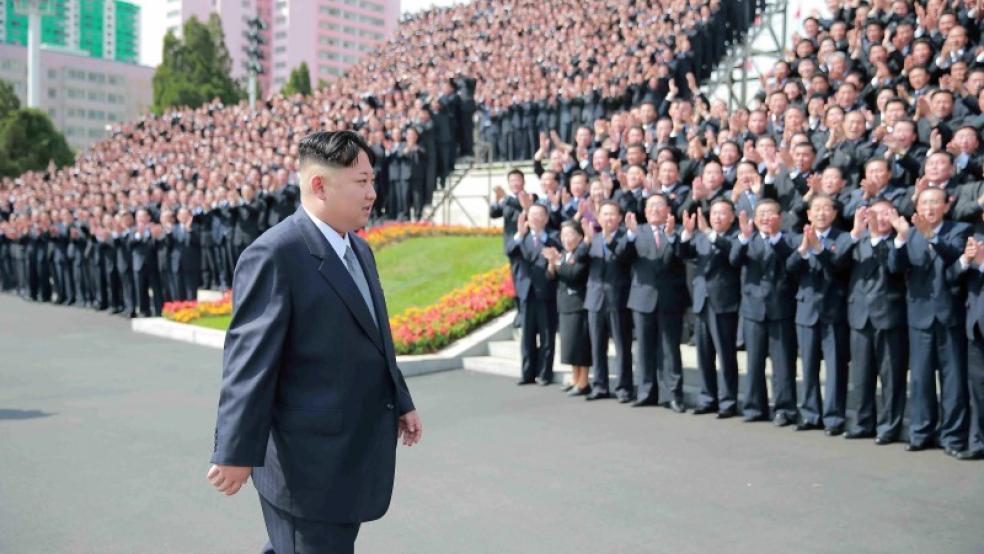Since the Korean War ended with an armistice almost 65 years ago, relations between the U.S. and North Korea have often been on a scary roller-coaster ride -- another military confrontation always in the offing.
With the exception of 1968, when North Korea killed one sailor, captured the USS Pueblo and took the rest of the crew hostage, new hostilities have arguably never been closer than they are today.
Related: Is the US About to Turn Up the Heat on North Korea?
Rookie Secretary of State Rex Tillerson on Friday wrapped up his first visits to Japan and South Korea before heading to China, and in one of his strongest statements about anything to date, he warned Pyongyang that its provocative actions would not be tolerated and talked of a pre-emptive strike.
On almost any other day, that might seem like an empty if not aggressive diplomatic threat. But the U.S. and its longtime South Korean ally are in the middle of war games that include F-18 Super Hornet attack jets soaring off the deck of the nuclear aircraft carrier USS Carl Vinson and cruising along the coast of the Korean peninsula; elite troops including Navy Seals, Army Rangers and members of Delta Force joining some 300,000 ROK (Republic of Korea) and almost 20,000 American soldiers on maneuvers; and the positioning of THAAD (Terminal High Altitude Defense) anti-missile systems with powerful radar components, one of which will be in a mountainous region of South Korea about 300 miles southeast of the Demilitarized Zone.
(That THAAD battery, in an ironic twist since it will first become operational under Commander-in-Chief Donald Trump, will be located on a former golf course.)
In fact, earlier this week, the Pentagon dismissed reports that some elite-troop maneuvers were aimed at “decapitating” the North Korean leadership – though it’s not unlikely such stories were read in Pyongyang.
In South Korea, where Tillerson visited the DMZ, he said the U.S. would not enter into any negotiations with North Korea over its missile and nuclear programs – a position similar to one taken by the Obama Administration that reflects Pyongyang’s history of reneging on promises to back off.
North Korea signed the Nuclear Non-Proliferation Treaty in 1985 and then after multiple violations, formally withdrew 18 years later. That same year, 2003, it pulled out of a 1992 agreement to keep the Korean Peninsula free of nuclear weapons. In 2005, North Korea admitted that it was building nuclear weapons.
Related: Tillerson’s Asia Trip Could Signal the End US Soft Diplomacy
On New Year’s Day of this year, North Korean leader Kim Jong-un said his country was getting ready to test an intercontinental ballistic missile, which would have the range to strike the U.S. North Korea also says it can produce a nuclear weapon small enough to fit on an ICBM, though none of its claims have been verified.
Early this month, North Korea launched four missiles intended to threaten U.S. bases in Japan. They landed in the Sea of Japan, some about 190 miles off the coast.
Tillerson made clear that the Trump Administration would not even consider talks until North Korea denuclearized and gave up its “weapons of mass destruction.”
The U.S.’s increasingly hard line may well reflect several new realities:
- While the Obama Administration's cyber war against North Korea may have partially disrupted its missile program, the latest "testing" suggests the hack attacks are no longer working.
- China seems increasingly unable to control client state North Korea. The killing of Kim Jong-un's estranged half-brother at the Kuala Lumpur airport February demonstrates this: Beijing reportedly saw Kim Jong-nam as a possible replacement, but Malaysian authorities believe North Korean operatives engineered his assassination by having young women smear his face with a highly toxic nerve agent.
- Kim Jong-un is arguably more blood-thirsty than his father or grandfather and seems more unhinged. He has slaughtered many of his top generals – in some cases with antiaircraft guns -- and other members of the leadership in Pyongyang, including his uncle by marriage, a key adviser who had close ties to China and was originally thought to be the man who would be the shadow leader of the country. Now there seems to be no one who can rein in Kim Jong-un.

On the campaign trail, Trump promised a harder line on North Korea, which with Iran neutralized for the moment, is the most dangerous nuclear rogue on the planet. But he is being more confrontational than might have been imagined.
Even with Tillerson now in Beijing and scheduled to meet with President Xi Jinping on Sunday, Trump on Friday tweeted: “North Korea is behaving very badly. They have been ‘playing’ the United States for years. China has done little to help!”
That may not make diplomatic life any easier for Tillerson, but China, too, seems frustrated by its inability to get Kim Jong-un under control. A New York Times story on Saturday said that Kim remains unmoved by Beijing’s economic pressure because he clings to nuclear weapons as the only guarantee of safeguarding his power and family dynasty.
Also on Saturday, Reuters reported that Kim was on hand for tests of a high-thrust engine and crowed about “the new birth” of the nation’s rocket program.
Correction: The story has been corrected. An earlier version stated that the USS Carl Vinson is equipped with F-35 aircraft, but the F-35 is not scheduled for deployment on U.S. aircraft carriers for several more years.





